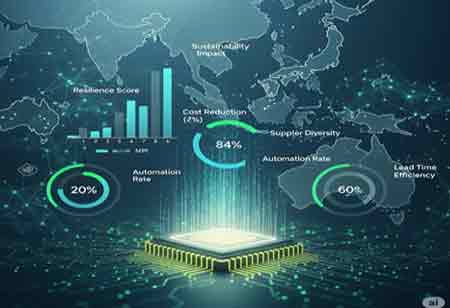THANK YOU FOR SUBSCRIBING
Different Types of Data Integration Methods
The process involves searching, obtaining, cleaning, and displaying data by a human or system.

By
Apac CIOOutlook | Thursday, December 02, 2021
Stay ahead of the industry with exclusive feature stories on the top companies, expert insights and the latest news delivered straight to your inbox. Subscribe today.
Fremont, CA: The capacity to generate enormous volumes of data is incredible. If only the capacity to extract insights from this data could keep up with its creation. That chasm is closing now, thanks to promising advances in data integration.
Data integration is merging data from many sources to assist data managers and executives analyze the data and making more informed business choices. The process involves searching, obtaining, cleaning, and displaying data by a human or system.
Business intelligence insights can get discovered by running queries on this integrated data by data managers and analysts. With so many potential advantages, organizations must take the time to connect their objectives with the best strategy. Let's look at the different forms of data integration to have a better understanding.
- Manual data integration
When a data manager supervises all parts of the integration — generally by developing custom code — it is known as manual data integration—without automation, integrating the various data sources, collecting the data, cleaning it, etc.
This method works well for one-time connections, but it rapidly becomes unworkable for complicated or regular integrations due to the time-consuming, manual nature of the procedure. Everything is done by hand, from data gathering to cleaning to presentation, and it takes time and resources.
- Middleware data integration
Software that links programs and transports data between them and databases is known as middleware. Middleware can operate as a translator between old and modern systems, which is especially useful when a corporation is merging recalcitrant legacy systems with newer ones.
Middleware is helpful for organizations merging ancient systems with current ones, but it's mostly a communications tool with limited data analytics capabilities.
- Application-based integration
All of the work is done by software programs in this technique. They find, extract, clean, and combine data from a variety of sources. Data may easily be transferred from one source to another because of this interoperability.
Because it's widespread in organizations operating in hybrid cloud settings, this strategy is also known as enterprise application integration. These companies must work with a variety of data sources, both on-premises and in the cloud. Data and workflows between different environments are optimized using this method.
- Uniform access integration
The method gathers data from even more different sources and displays it consistently. It accomplishes this while keeping the data in its original position.
That's the best approach for firms that need to access several separate systems. Such a strategy can give insights without the cost of producing a backup or duplicate of the data if the data request isn't too taxing on the host machine.





